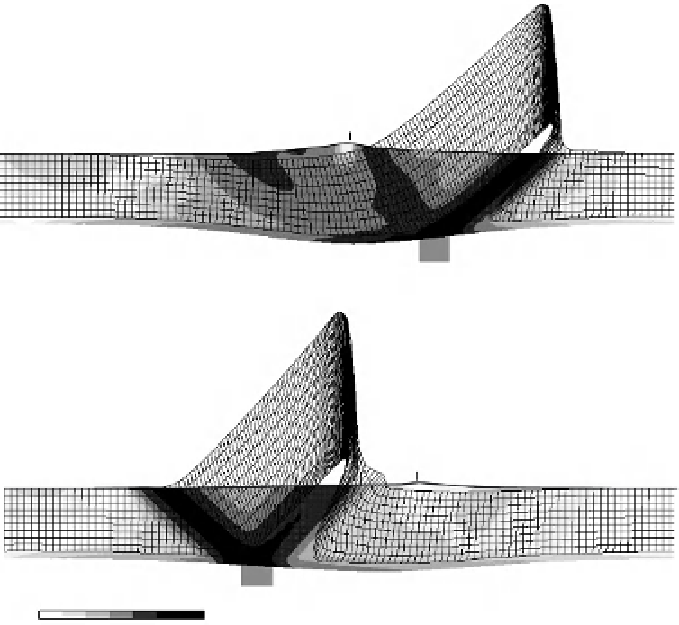Geology Reference
In-Depth Information
Orographic Exhumation: The Role of Moisture Source
A
Retro-wedge moisture source
wind
topographic
divide
pro wedge
retro wedge
fixed
mantle
subducting
mantle
maximum crustal
thickening
maximum
strai n
B
Pro-wedge moisture source
maximum
strai n
wind
topographic
divide
retro wedge
pro wedge
fixed
mantle
subducting
mantle
maximum crustal
thickening
.001
.01
.1
1
Strain rate
Fig. 11.19
Cross-sectional model of crust, erosion, and topography in a two-sided collisional orogen.
The two panels display contrasting topography and exhumation patterns associated with how moisture enters the
orogen based on wind direction: in the same direction as the subducting slab or opposing it. The initial mesh,
attached to material particles, was rectilinear, and has been deformed significantly. Substrate detachment point is
given by the gray rectangular block. Crust deforms according to a temperature-dependent viscous constitutive law
below the Coulomb yield stress. The final topography is shown as the solid bold line in each model. The portion of
the rock mass within the “Lagrangian tracking mesh” above this line has been exhumed and has been lost to erosion.
Note that, despite identical convergence tectonics, the zones of strain and patterns of erosion are strikingly different
based on whether storms enter the orogen from the left or right sides. Modified after Willett (1999).
Fan-Delta Evolution on a Faulted Coastline
rising
block
fault
subsiding
block
shoreline
fan delta
time
Fig. 11.20
Numerical model of fan-delta evolution.
Three frames from a numerical model of landscape evolution (CHILD; Tucker
et al.
, 2001), showing the development
of topography and fan-delta complexes in response to differential vertical motion on adjacent, normal-fault-bounded
blocks; the upstream block is rising. The shoreline position is shown by the heavy gray line; lighter colors indicate
higher elevations. Modified after Tucker and Hancock (2010).




























































